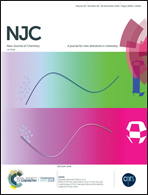Enhanced performance of graphene transparent conductive films by introducing SiO2 bilayer antireflection nanostructure
Abstract
The performance of graphene transparent conductive films (TCFs) can be greatly enhanced by introducing an antireflection (AR) nanostructure. We directly deposited graphene on silica nanosphere/acid-catalyzed silica layer (SNS/a-SL) AR nanostructure by assisted catalysis of Cu nanoparticles in ambient pressure chemical vapor deposition to obtain graphene composite TCFs. By introducing the SNS/a-SL AR nanostructure, the transmittance and sheet resistance of graphene TCFs achieved were 89.65% and 2.04 kΩ sq−1, respectively. Compared to graphene films, the transmittance was improved by 5.5% and sheet resistance was reduced by 0.44 kΩ sq−1. The SNS/a-SL AR nanostructure effectively reduced reflection from the substrates owing to the structure of gradient refractive index and exhibited good stability at high temperatures because of the existence of a-SL. The AR nanostructure also could provide more electronic transport channels to achieve regulation of the electrical property of graphene TCFs. This method simultaneously improves the transmittance and conductivity of graphene TCFs by a facile process, providing an important method to prepare graphene TCFs with excellent performance.



 Please wait while we load your content...
Please wait while we load your content...